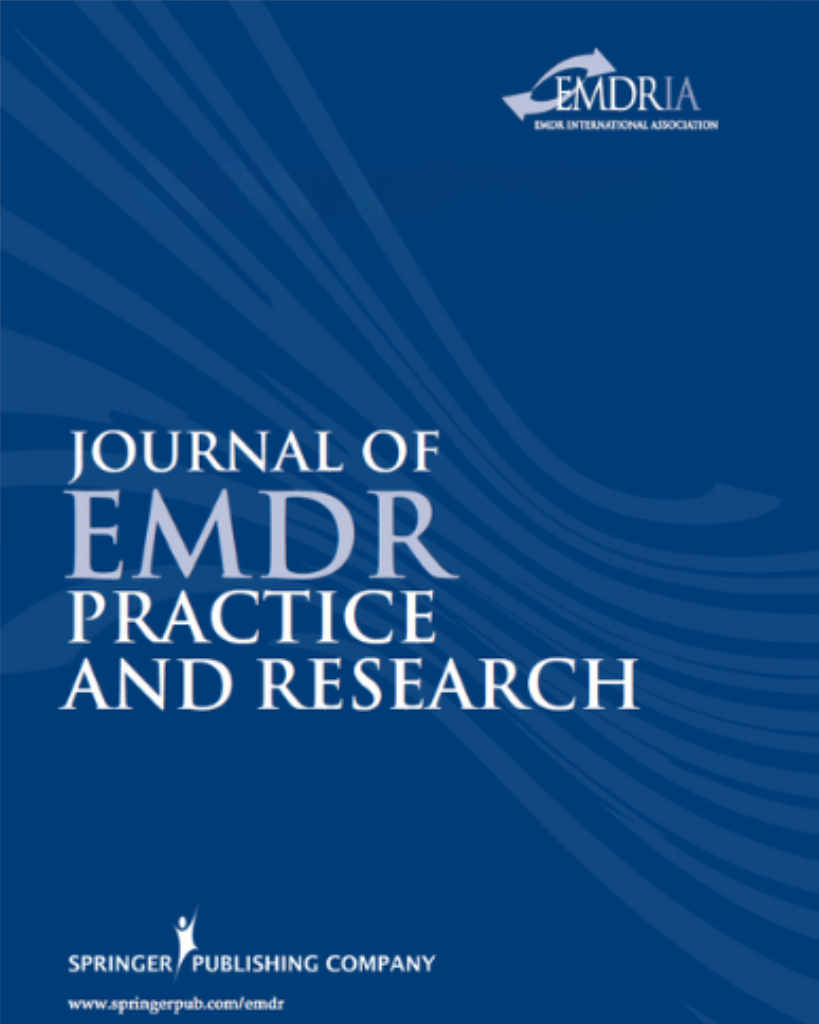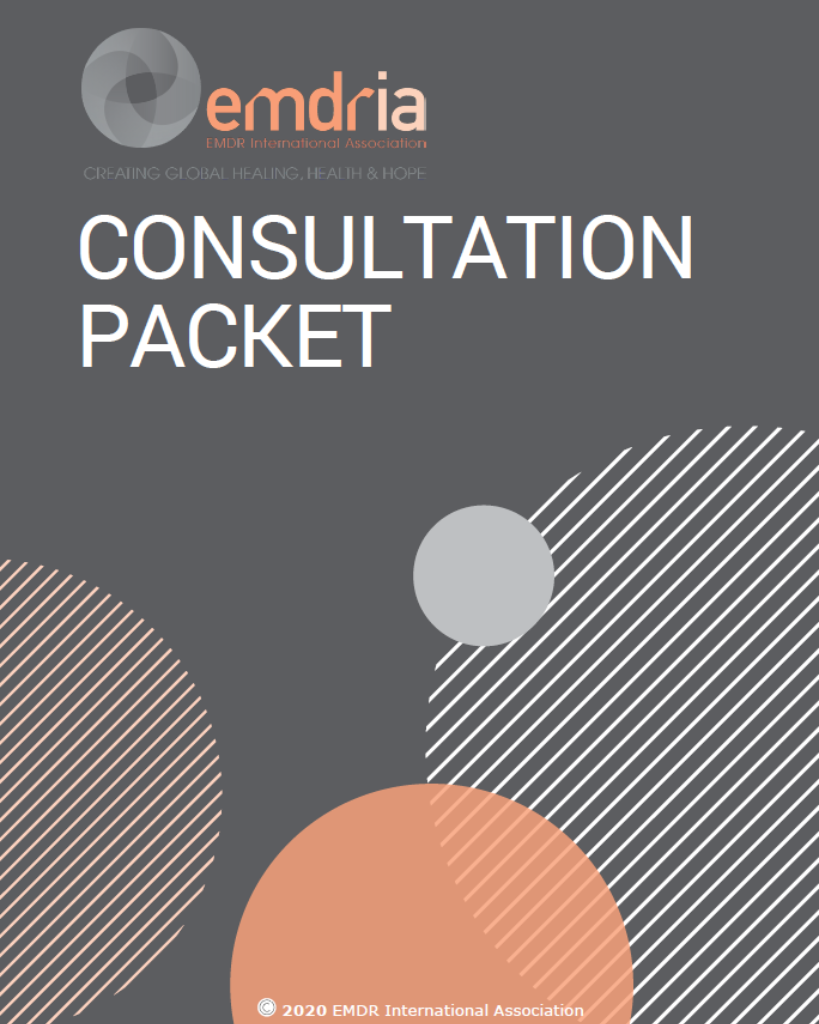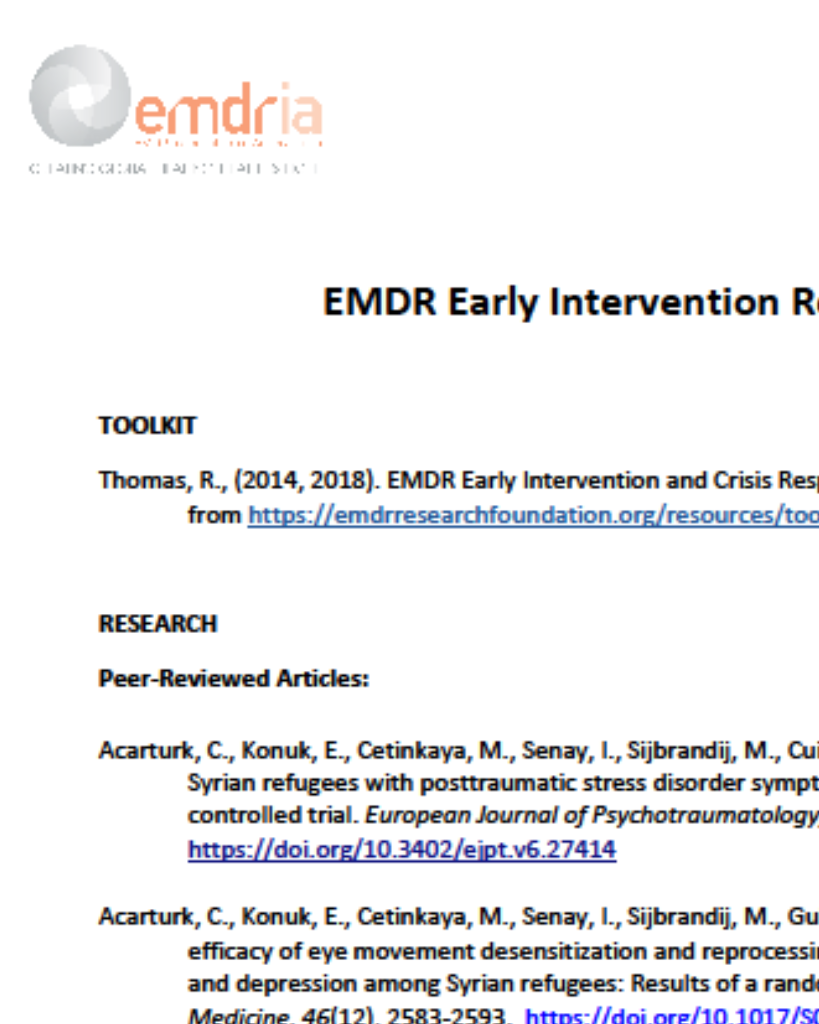Evaluating the Effect of Eye Movements on Positive Memories Such as Those Used in Resource Development and Installation
Study found that the effectiveness of bilateral stimulation in resource development and installation (RDI) is questionable.
Article Abstract
“Resource development and installation (RDI) is an eye movement desensitization and reprocessing (EMDR)-related procedure developed to strengthen positive associations in positive and resourceful memories (Korn & Leeds, 2002). This study tested the assumption that bilateral stimulation (horizontal eye movements [EM]) in RDI “appears to lead to spontaneous, rapid increases in affective intensity . . . and to rich, emotionally vivid associations” (Korn & Leeds, p. 1469). This study also tested whether eye movement effects could be better accounted for by working memory or by interhemispheric interaction theory. Fifty-three undergraduate students each recalled three memories of pride, perseverance, and self-confidence. They provided pretest and posttest ratings of each memory for vividness, pleasantness, and experienced strength of the positive quality, before and after performing three simultaneous tasks during recall: horizontal EM, vertical EM, and recall only. Results were fully in line with working memory predictions, with significant decreases for all variables following both eye movement tasks. There was no support for the interhemispheric hypothesis. It is concluded that the effectiveness of bilateral stimulation in RDI is questionable. Clinical implications are discussed.”
—Description from publisher
Article Access
Open Access
Hornsveld, H. K., Houtveen, J. H., Vroomen, M., Kapteijn, I., Aalbers, D., & van den Hout, M. A. (2011). Evaluating the Effect of Eye Movements on Positive Memories Such as Those Used in Resource Development and Installation. Journal of EMDR Practice and Research, 5(4), 146–155. https://doi.org/10.1891/1933-3196.5.4.146
About the Journal
The Journal of EMDR Practice and Research is a peer-reviewed publication devoted to integrative, state-of-the-art papers about Eye Movement Desensitization and Reprocessing. It is a broadly conceived interdisciplinary journal that stimulates and communicates research and theory about EMDR, and their application to clinical practice. The Journal of EMDR Practice and Research is the Official Publication of the EMDR International Association.
Date
December 1, 2011
Creator(s)
Hellen K. Hornsveld, Jan. H. Houtveen, Max Vroomen
Contributor(s)
Immanuel Kapteijn, Dorienke Aalbers, Marcel A. van den Hout
Practice & Methods
Mechanisms of Action, Resourcing
Extent
10 pages
Publisher
Springer Publishing Company
Rights
Copyright © 2011 EMDR International Association
APA Citation
Hornsveld, H. K., Houtveen, J. H., Vroomen, M., Kapteijn, I., Aalbers, D., & van den Hout, M. A. (2011). Evaluating the Effect of Eye Movements on Positive Memories Such as Those Used in Resource Development and Installation. Journal of EMDR Practice and Research, 5(4), 146–155. https://doi.org/10.1891/1933-3196.5.4.146
Series
5
Installment
4
Audience
EMDR Therapists
Language
English
Content Type
Article, Peer-Reviewed
Original Source
Journal of EMDR Practice and Research
Access Type
Open Access





